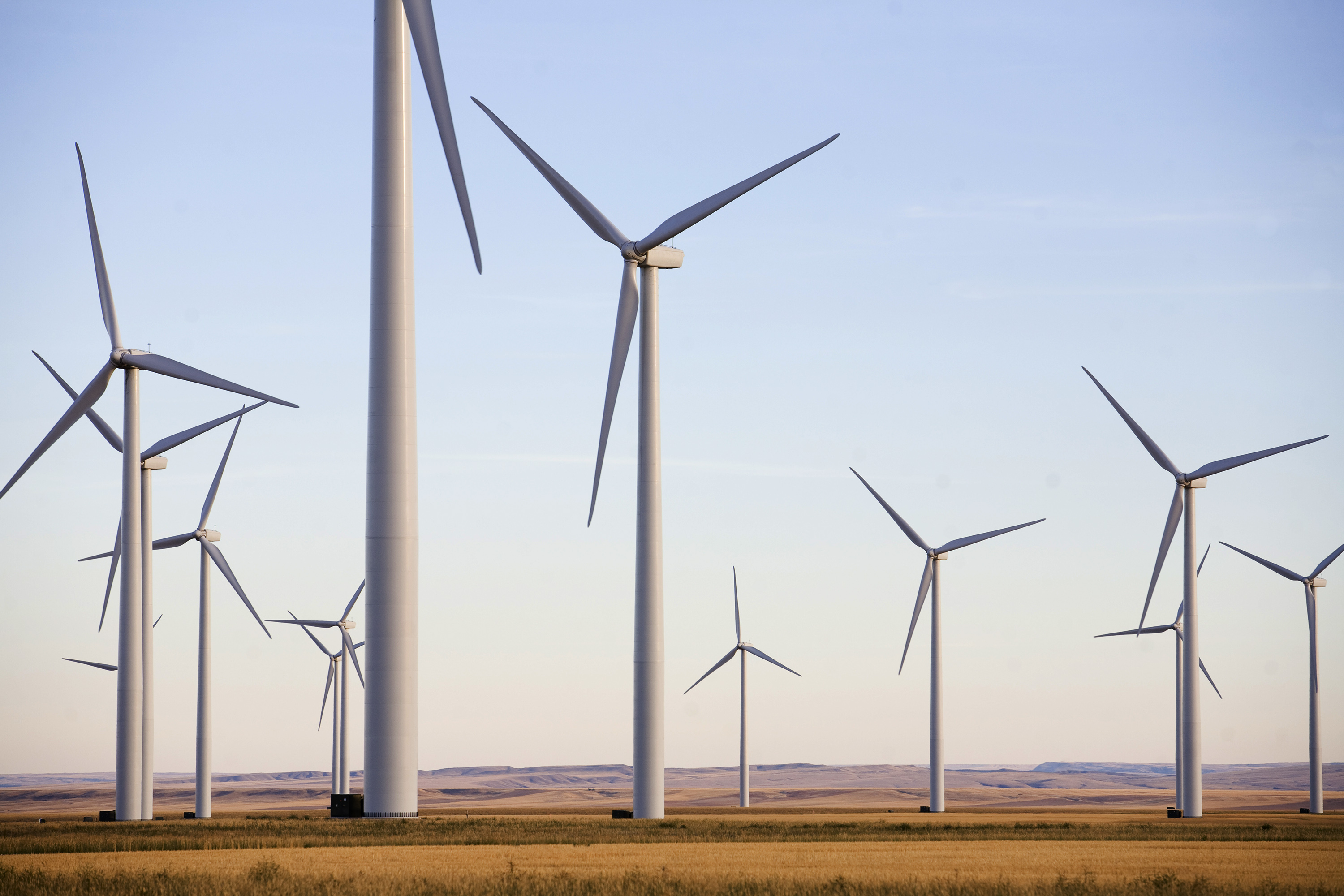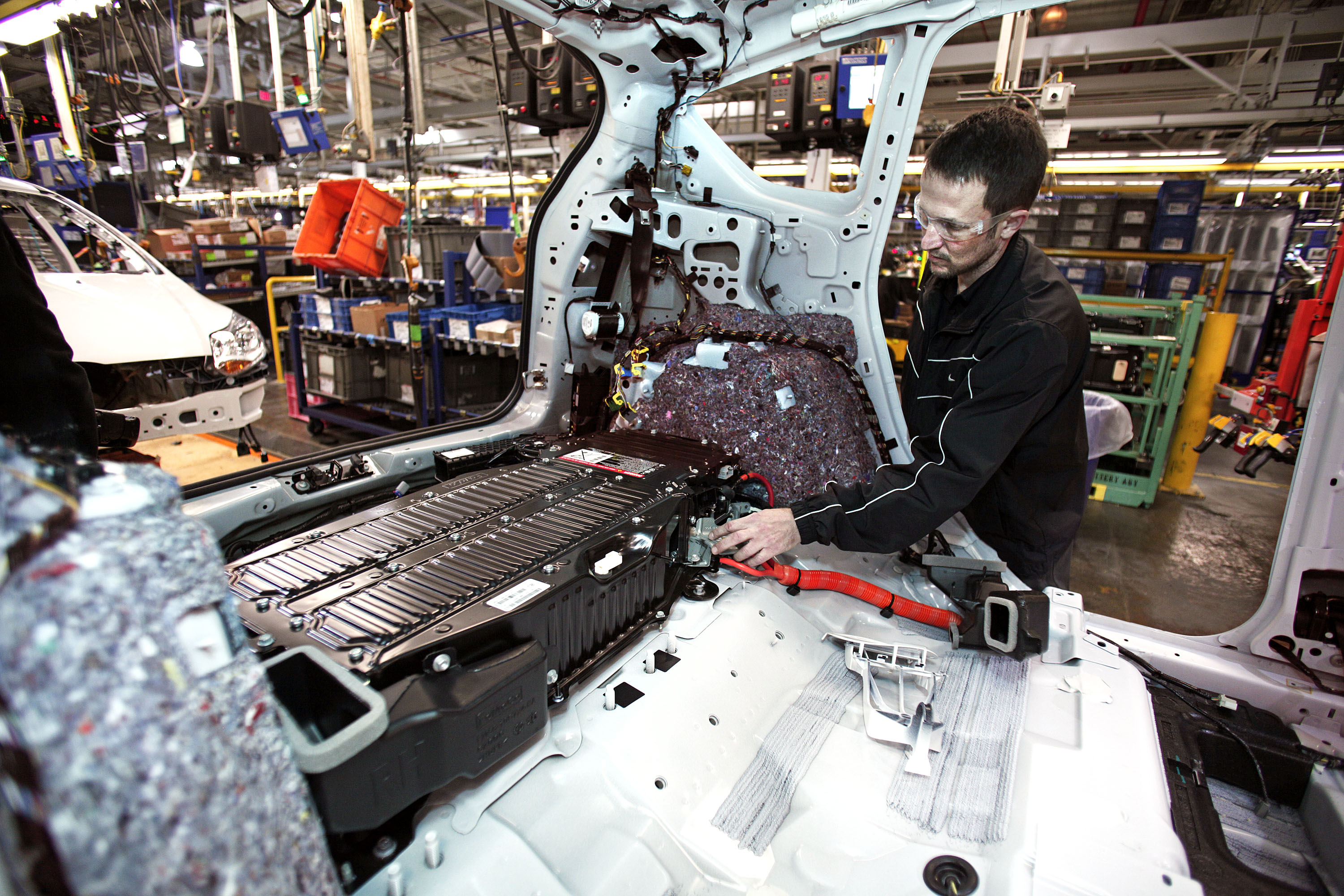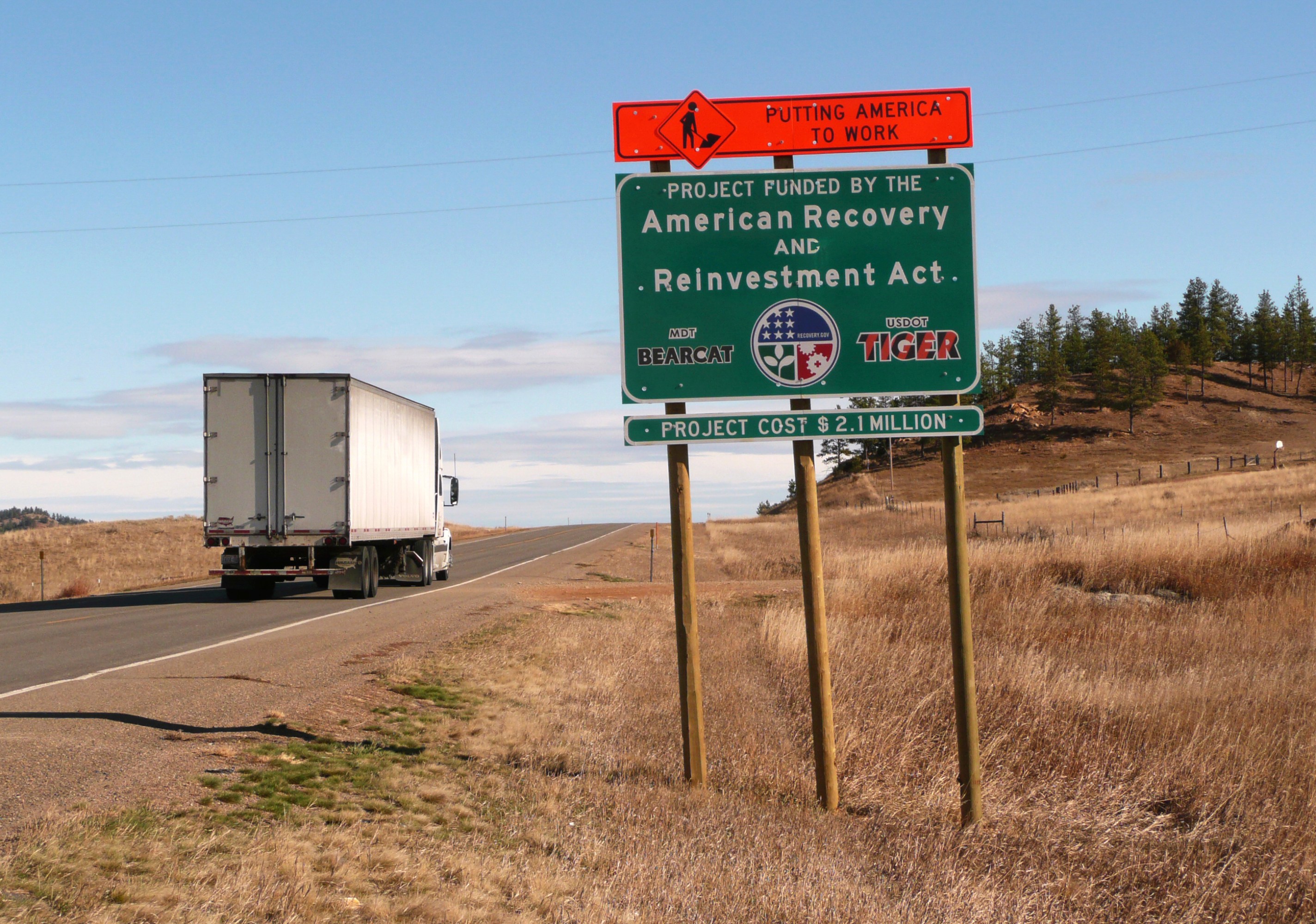In the depths of a downturn that has wiped out millions of jobs and trillions of dollars in wealth, a wide range of voices in the US are calling for a green stimulus to kick-start growth and lay the foundation for a more sustainable economy.
That sentence could have been written a decade ago as easily as today. In 2009, amid skyrocketing unemployment and a crippled economy, President Barack Obama signed the $800 billion American Recovery and Reinvestment Act, which included some $90 billion for clean-tech projects and the creation of “green jobs.”
Eleven years later, Joe Biden, Obama’s vice president and now the presumptive Democratic nominee for the presidency, has proposed spending $2 trillion on clean energy as a key part of his plan to revive an economy ravaged by the covid-19 pandemic.
Most experts agree that one way or another, it’s going to require massive infusions of government money to prevent a second Great Depression. So why not spend it on one of society’s most critical and intractable challenges: building a sustainable clean-energy infrastructure?
Climate economist Nicholas Stern and Nobel Prize–winning economist Joseph Stiglitz asserted in a paper published in May in the Oxford Review of Economic Policy that failing to seize this moment would exact a high cost. They wrote: “The recovery packages can either kill these two birds with one stone—setting the global economy on a pathway towards net-zero emissions—or lock us into a fossil system from which it will be nearly impossible to escape.”
The problem is it’s difficult to hit both of those birds—stimulus and climate change—with a single stone. For one thing, there’s a fundamental mismatch in the timelines. Successful fiscal stimulus must reach the economy, and the people who need help, as quickly as possible. A clean-energy transformation demands investments in research and infrastructure projects that could take years or decades to pay off.
At least initially, then, the priority of stimulus spending should be a quick economic recovery, says Robert Stavins, director of the Harvard Environmental Economics Program. “It can be pushed a bit in a green direction to address climate change. But you have to be very careful that some of these investments don’t have the effect of trying to kill two birds with one stone and missing both,” he says.
This downturn is likely to be especially deep and protracted, however, requiring the US and other countries to think beyond the immediate payoffs of initial stimulus spending. That provides an opportunity to direct billions of dollars or more toward building clean-energy infrastructure that is, as Stern and Stiglitz argue, too great to miss.
So it’s worth looking back to the 2009 stimulus bill and asking: What worked? What didn’t? How can we apply those lessons to any future green stimulus? And what can it realistically accomplish?
What worked?
Obama’s $90 billion in green spending was the largest single injection of money into the US energy sector in history. It used a variety of grants, loan guarantees, and tax credits to fund energy-efficiency retrofits of homes and buildings, public transportation projects, huge solar and wind power plants, solar-cell and battery manufacturing facilities, clean-energy research, and smart-grid upgrades.

While the Obama administration emphasized the immediate economic benefit of “green jobs,” it recognized that many of the energy investments would take longer to pay off. “The idea was that promoting a long-term transformation to a less polluting, more diverse, and therefore more robust energy economy would also strengthen the foundation for long-term economic growth,” wrote Harvard economist Joseph Aldy, the special assistant to the president for energy and environment, in a 2013 assessment of the clean-energy package.
More than 10 years later, are we seeing that transformation? The answer is mixed.
Yes, the programs did create some green jobs and primed private investments in clean energy. A 2016 analysis by Obama’s Council of Economic Advisors concluded that they “supported” about 900,000 “job years” (a full-time job for one year) from 2009 to 2015. They also unlocked about $150 billion in private capital or state and local funds, and “laid the groundwork for the remarkable growth in clean energy in the United States that has occurred over the past seven years.” By 2016, wind generation more than tripled, while solar rose 30-fold, the analysis found.
“The U.S. government’s support for large clean energy demonstration projects through the American Recovery and Reinvestment Act … sparked a decade-long boom in utility-scale solar photovoltaic, or PV, power construction,” wrote Varun Sivaram, a visiting senior fellow at Columbia’s University Center for Global Energy Policy, in a recent analysis.
The stimulus package’s loan guarantee program financed some notable failures, most famously solar company Solyndra, which went bust in 2011. But by 2014, the program was generating tens of millions of dollars in interest for the federal government. Steven Chu, who was responsible for deploying much of the clean-energy spending as Obama’s first energy secretary, said during a recent Stanford forum that it also pulled electric-vehicle company Tesla from the brink of insolvency and helped finance several of the nation’s largest solar and wind projects at that time. “Virtually all those projects did come in on budget, on time, and are making money,” he said.
The Recovery Act also invested more than $6 billion to develop advanced batteries, biofuels, and hybrid and electric vehicles (EVs), plus another $3.5 billion for general “green innovation and job training.” The latter included $400 million for ARPA-E, a federal agency created to support early-stage clean-energy R&D.
It would be a stretch to say the R&D efforts have been transformative at this stage. Programs like ARPA-E certainly helped produce a number of scientific papers and patents, but it’s hard to point to any major breakthroughs or breakout businesses.
What didn’t work?
A major shortcoming of Obama’s green stimulus is that it didn’t do much to actually stimulate the economy in the thick of the downturn.
A analysis published in June found the green part of the program did produce almost 15 new jobs per $1 million spent, which is on par with the overall stimulus bill. But it took years longer, with most of the job creation occurring between 2013 and 2017. “While the persistency of the job creation effect is clearly a positive aspect of the green fiscal stimulus, we find little evidence of short-run employment gains,” the researchers wrote.
A May report by the Congressional Research Service found that funding for transportation infrastructure was also slow and primarily went to “routine projects,” such as paving highways and buying buses. Three years after the Recovery Act was enacted, the government had spent only 8% of the funding for high-speed rail.
Aldy says the process of applying for loan guarantees was so onerous, and became so politicized, that lots of companies decided it wasn’t worth it. And the effort to leverage private or state sources of capital meant projects sputtered when partners backed out, leaving billions of federal dollars on the table or sunk into projects that failed, he adds.
For instance, the governors of Florida, Ohio, and Wisconsin all ultimately rejected funds for high-speed rail. Likewise, the stimulus bill put billions into carbon capture and sequestration projects, such as the FutureGen 2.0 project in Illinois. But most of the so-called clean coal projects were halted or put to different uses.
The stimulus also clearly failed to achieve the Obama administration’s stated aim of helping to boost clean-tech manufacturing in the US.
The Recovery Act allocated $2.4 billion to produce advanced batteries and lower-emissions cars and trucks. Detroit automakers GM, Chrysler, and Ford received $400 million to build hybrids, EVs, batteries, and electric powertrain components. The Department of Energy dedicated another $850 million to help A123 Systems, Johnson Controls, Compact Power, and Dow Kokam establish Michigan as a battery manufacturing hub.

Harvard economist Josh Lerner argues that the process for picking projects was flawed from the start, driven by the goal of helping certain regions or sectors rather than the cold calculus of business prospects. For instance, much of the aid was directed to Michigan and its auto industry, because they had been particularly hard hit by the recession. Ultimately, the politicized investments produced market distortions and poor business decisions that contributed to some of the highest-profile failures of the era, Lerner wrote.
One obvious problem: there weren’t enough buyers for electric vehicles. A123’s cofounder and former chief technology officer, Bart Riley, told ProPublica that the startup couldn’t resist the capital, but that it compelled the company to ramp up manufacturing before it had the customers to justify it.
A123 filed for bankruptcy in the fall of 2012. The following year, Dow Chemical sold its stake in the Dow Kokam plant, and Johnson Controls began unloading its Western Michigan assets as well, according to local media reports.
China today produces about two-thirds of the world’s lithium-ion battery cells, while the US manufactures around 13%, according to BloombergNEF. And China sells more than three times as many electric vehicles.
Lessons for today
So what do these successes and failures tell us about how lawmakers should shape any green investment efforts today – at a point when Democrats and Republicans in Congress remain very far apart on a second set of stimulus measures?
We know that green spending works better over the long term than the short term, and that the downturn is inflicting pain on many people today. So the first and biggest priority isn’t the “greenness” of any proposals, but whether they rapidly revive the economy and provide jobs or other forms of financial relief.
“What’s really important right now is getting money out quickly, and Congress can’t even do that,” says David Popp, a professor of public administration and international affairs at Syracuse University. “I worry about tacking on green stimulus, or anything else that slows down the process. We can worry about financing the green transition six months from now.”
Indeed, the need for government investment isn’t going away anytime soon. Jason Bordoff, founding director of the Center on Global Energy Policy at Columbia and a former special assistant to Obama, stressed in a recent piece in Foreign Policy that “this downturn is going to be longer and deeper than most people think.” He points out that the Congressional Budget Office expects the recovery to take a decade.
That means governments should make investments that may take years to pay off in economic terms, but will also do more to accelerate the shift to a more sustainable economy, Bordoff says.
The paper by Stern and Stiglitz, as well as recent reports from the International Energy Agency and the Breakthrough Institute, all highlight areas that can pay high economic and climate dividends, though generally over longer time periods. These include modernizing transportation infrastructure, upgrading and interconnecting the US’s aging and disparate grid systems, and investing in R&D.
Another clear lesson from the 2009 stimulus is that funding and loan guarantees aren’t enough. Building up domestic manufacturing requires more than handing out money to a few companies and hoping they take off, Sivaram says. You need to support job training, manufacturing advances, supply-chain development, continued R&D, and the formation of regional industrial ecosystems.
Emerging technologies also require predictability: steady, ongoing sources of funding and consistent public policies.
“The folks on Capitol Hill who are considering this should not overlook the importance of policy setting on their own, or to accompany any dollars spent,” says Cathy Zoi, chief executive of EVgo and acting undersecretary at the Department of Energy during the Obama administration. “Private capital will follow when you say ‘The bar is set here’; it’s when there’s uncertainty that private capital stays on the sidelines.”
But perhaps one of the larger lessons of the Recovery Act is not to overpromise how much climate progress we can actually make through stimulus efforts, says Noah Kaufman, an economist at Columbia University.
Consider the metric that matters most: greenhouse-gas emissions. The US spent $90 billion and its emissions only fell 4.4% between 2009 and 2019, according to the Rhodium Group. (Carbon dioxide emissions have fallen more, 23%, relative to GDP, reducing the economy’s “carbon intensity.”)

Government spending can help support emerging technologies and industries, but it takes comprehensive climate policies like carbon taxes, cap-and-trade programs, and clean-energy standards to achieve deep reductions in greenhouse gases. And there’s scant chance of pushing through such sweeping measures “while the economy is spiraling toward a deep recession,” Kaufman wrote in a June essay.
Ultimately, the goal of any stimulus package should be to deliver the most robust recovery possible. First and foremost, that’s because the downturn is inflicting serious suffering on millions of people, which will only get worse the longer it drags on. But second, it’s because studies clearly show it becomes easier to pass major climate legislation when the economy is flourishing and people and politicians can afford to think about longer-term risks.
“Prosperity and climate action do go hand in hand,” Kaufman says. “Unfortunately, the flip side to that now is you have to regain some level of economic prosperity before people are going to be willing to come back to the table on this issue.”
from MIT Technology Review https://ift.tt/3gdi1He

No comments:
Post a Comment